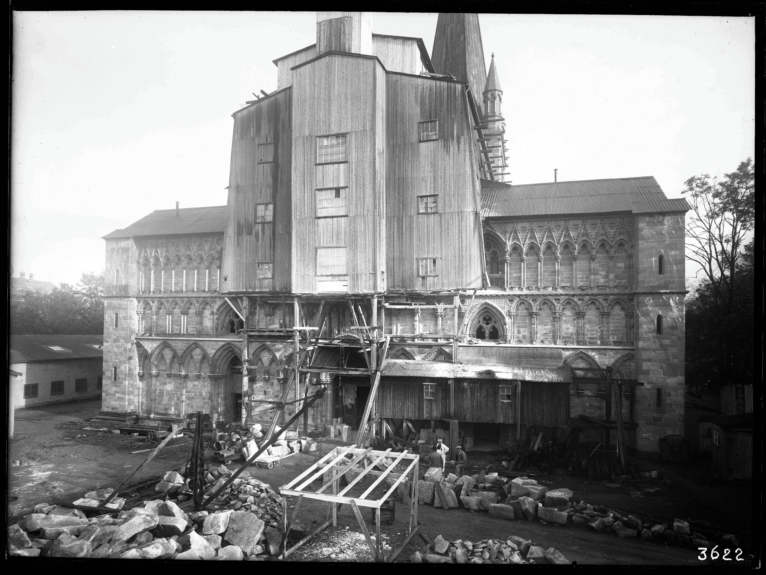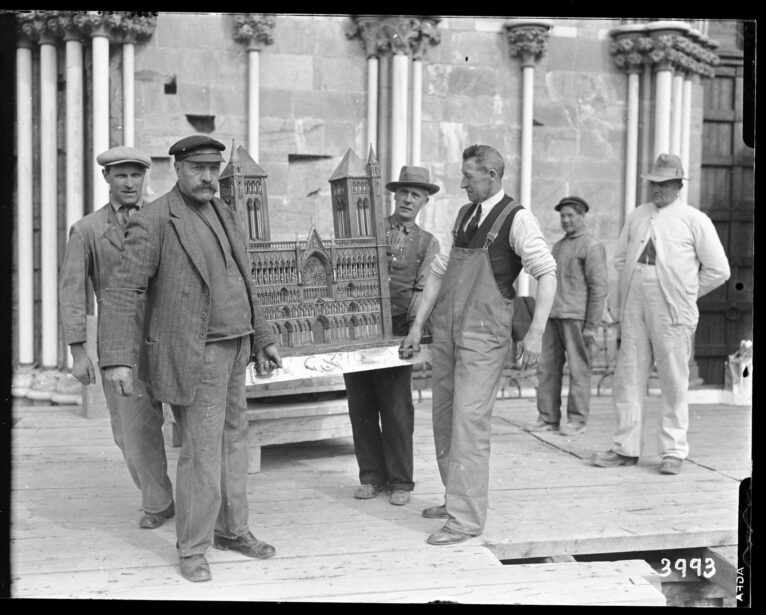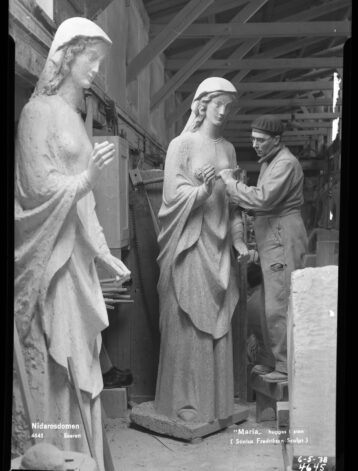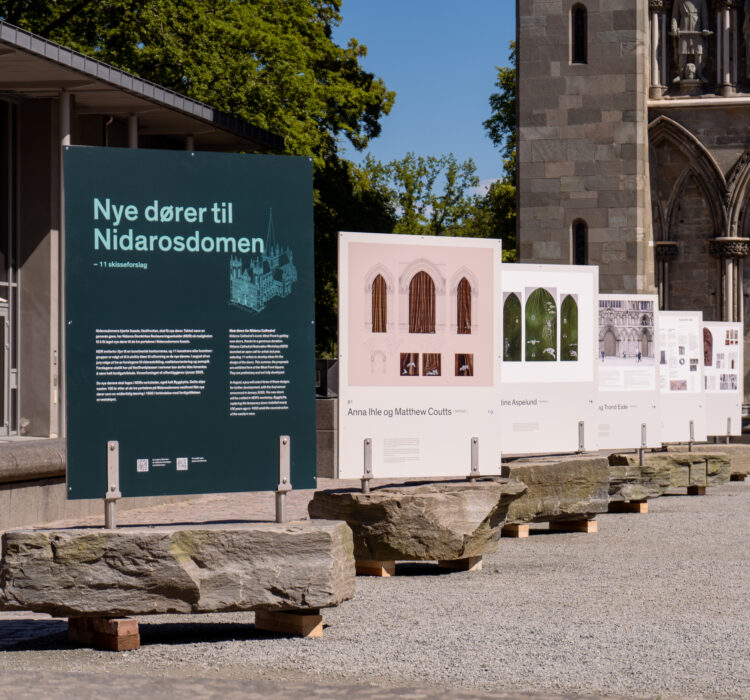Nidaros Cathedral’s iconic West Front is getting new doors, thanks to a generous donation. Nidaros Cathedral Restoration Workshop (NDR) launched an open call for artists last year, selecting 11 artists to develop ideas for the design of the doors.
This summer, the proposals are exhibited here at the West Front Square. They are preliminary and not fully developed. In August, a jury will select three of these designs for further development, with the final winner announced in January 2025. The new doors will be crafted in NDR's workshop, Bygghytta, replacing the temporary doors installed nearly 100 years ago in 1930 amid the reconstruction of the western nave.
Selected artists
A historic project
When Norway’s first constitution was adopted in 1814, it was decided that Nidaros Cathedral would be the place in which Norway’s kings would be crowned. At that time, the cathedral’s West Nave lay in ruins. Nevertheless, the building was still seen as a symbol of Norway’s glorious medieval past. An extensive restoration programme was therefore initiated in 1869; work that continues to this day.
Besides the Vigeland Sculpture Park in Oslo, the West Front of Nidaros Cathedral is the largest sculpture project undertaken in Norway in the 20th century. Cathedral architect Helge Thiis (1897–1972) invited many influential artists to contribute to the design of the facade, which was completed in the 1980s – with the exception of the doors.

The West Front under construction. The photo shows the West Front, and the area in front of it, as a hectic and chaotic building site in the late 1920s. The objective was to finish the interior of the nave in time for the 900th anniversary of St Olav’s death in 1930, while the West Front itself was only built high enough to support the broad aisle. The huge Rose Window in the centre of the facade was completed in time for the anniversary, thanks to donations from Norwegian women.
From temporary to new doors
The three doors currently in place on Nidaros Cathedral’s West Front date from 1930. The doors were made as a temporary solution in connection with the 900th anniversary of St Olav’s death. They were roughly built and were only ever intended to meet the need for a short period until the nave was finished.
Thanks to a generous gift, the Nidaros Cathedral Restoration Workshop now has the opportunity to commission new ornamental doors to adorn the cathedral’s characteristic West Front.

The cathedral model being transported to Oslo (1933). Helge Thiis’s plaster model of Nidaros Cathedral was sent to Oslo and put on display before the Norwegian parliament (Storting) was scheduled to approve the plans. The transport firm A. Vinje delivered the model of the cathedral to the railway station, where it was put on a goods train bound for Oslo. An eight-strong team of men accompanied the model until it was safely stowed inside the goods wagon.
What is the significance of the doors?
In the Middle Ages, church doors symbolised the transition between the sacred and the profane. Throughout history, church doors have been important. They have been used to tell stories, disseminate information, demonstrate the social hierarchy and offer protection or asylum.
Today, at a time of cultural and spiritual diversity, these doors invite us to reflect on our personal and collective faith. The doors of Nidaros Cathedral are therefore not merely the entrance to a Christian house of worship, but are also a symbol of the liminal experience of being human – going from one condition to another, seeking and belonging.
The artists who are designing the new doors must take account of a rich history, while also visualising today’s understanding of a liminal space – a place for reflection, change and dialogue between the past and the present.

The West Front is filled with sculptures. The rebuilding of the West Front was completed in 1969. Now came the task of filling its facade with sculptures. Some of the country’s foremost artists were commissioned to design the 76 statues of saints and biblical figures that adorn the wall today. In this photo from 1938, stone carver Oscar Lynum is working on the sculpture of the Virgin Mary. The sculpture was designed by the artist Stinius Fredriksen.
